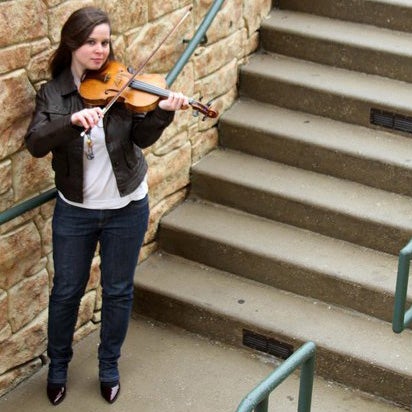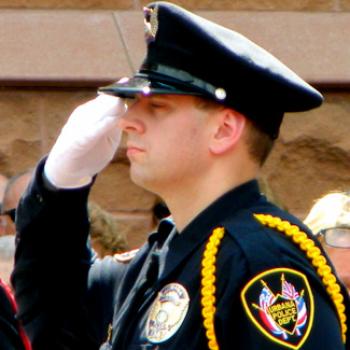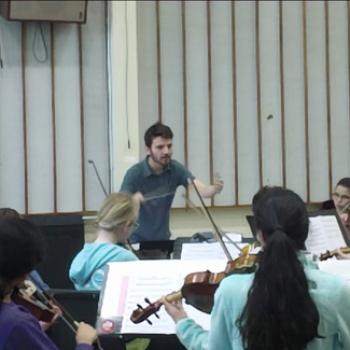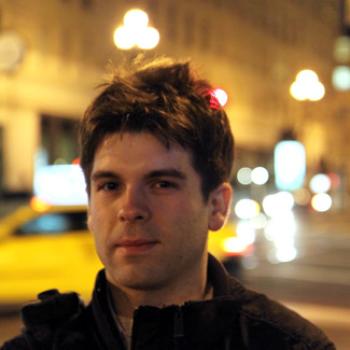On founding Violin for Vasculitis
Allison Lint ’09
“I am more often labeled an “activist” than a “touring violin virtuoso,” [but] that doesn’t alter my goal. I am musically fulfilled through this project more than I ever could be as a healthy performer.”

My story began, not at Oberlin, but two years before I walked through the conservatory doors as a student. At that time I was a musician as well as a survivor.
I lived what felt like a dual life. One part of me was the cheerful spirit, glad to be alive, and thankful to have the gift and joy of playing music. The other was a girl in a young body, trapped in the shackles of a disease far beyond my years.
It surfaced at the age of 16, when I began to show symptoms of illness — respiratory problems, fatigue, and a cough that brought up blood. It was determined that I had been suffering a severe lung hemorrhage, and it would be four months, three hospital visits, and one two-week sedation period later that the doctors would finally reach a diagnosis: granulomatosis with polyangiitis (GPA/Wegener’s), a rare type of vascular autoimmune disease.
The following months brought chemo treatments, my 17th birthday, a brand-new driver’s license, bouts of depression, and many physical and emotional challenges of playing the violin. But as I approached my senior year of high school, I knew that I wanted to attend Oberlin, so I applied regardless of my medical condition and its uncertainties. It was a triumph to be accepted to the conservatory on scholarship, and I entered my freshman year full of hope for my music and for my health.
My violin professor, Gregory Fulkerson, was keenly aware of my position — that of a talented but discouraged young musician, struggling to overcome what had almost halted my career several times. Our lessons became a type of therapy, as his guidance centered not only on my musicianship, but how my helplessness in the face of chronic illness played into my performance. I learned to treat my onstage persona as a “rock-star” alter ego, a way of proving to myself that I could handle difficult music, just as I could fight through the medical challenges I faced offstage.
In January 2007, I was invited to travel to Carnegie Hall with the Oberlin Conservatory Symphony Orchestra. As a musician, it was a great milestone; but I almost didn’t make it. That month I had suffered a relapse of the Wegener’s and faced the threat of rigid travel restrictions as the doctors once again scrambled to regain control of my immune function. Fortunately, with another dose of heavy medication, I was allowed to go on the trip. To this day, playing Bartok’s Concerto for Orchestra under Robert Spano ’83 in the pristine, world-famous hall remains a defining memory of my time at Oberlin.
I also took viola lessons with Peter Slowik, who taught me the fulfillment of using music for service. That teaching sparked an attitude in my mind that has lingered over the years. While I oftentimes struggle to practice alone, and can’t find the motivation to learn new music for my own benefit, I tap into an endless source of pleasure in playing for an audience. If my music exists for a purpose, it feels almost effortless.
Approaching senior year, I felt no closer to reaching my idea of an ideal musical career than I had as a freshman. My wish, like so many Oberlin students, didn’t fit into a classical music mold — the ideas of teaching at a university, or playing in a top-tier orchestra or touring music ensemble — weren’t among my desired routes. But the brands of individual encouragement from Oberlin professors were the first catalysts to developing my own niche on the music stage.
It was exactly one year out of school, working as a teacher and freelance musician, that I decided what I was meant to do — and that it had been present all along. The two paramount aspects of my life were music and my illness. Why not combine the two, and overcome something bigger than I could with either one separately?
Soon afterwards I founded my nonprofit project, Violin for Vasculitis (V4V). Through it, I plan to travel to all 50 states to help promote awareness of this life-threatening disorder, which I and 3 million other people in the country have. In each state I will play a concert, usually consisting of diverse repertoire I studied while in school, and incorporating local talent — sometimes fellow Obies! — into my musical program. Interspersed with musical selections, I provide information on vascular disease and its dangerously unrecognizable symptoms.
Within weeks of beginning the project I had the full support of music professors, Oberlin colleagues, members of the vasculitis community, and musicians around the globe. By the end of the year 2011, V4V will have performed 8 states; at least 5 more already have events planned for early 2012. Recently, I was able to add a fundraising aspect to the journey; my goal is to raise $25,000 for the Vasculitis Foundation by the time I leave the last state.
From the moment I stepped onstage at the kickoff V4V event in my hometown, I knew I was exactly where I needed to be. Though I am more often labeled an “activist” than a “touring violin virtuoso,” that doesn’t alter my goal. I am musically fulfilled through this project, more than I ever could be as a healthy performer.
Besides, I’ve already played in Carnegie Hall.
To read more about the project and updates on my travels, visit Violin for Vasculitis.
Tags:
You may also like

On musical training and non-musical careers
“I hadn’t been in law enforcement for long before I realized that many of the same characteristics of police work are similar to playing in a jazz group.”
Matt Rivers ’04

On conducting a youth orchestra
“Music is a living art, not to be kept in the glass cases of history museums...I can help foster that kind of energy and excitement about performing in another generation of musicians.”
Maurice Cohn ’17

On skills learned in the Conservatory
“In [performance], we must take all of the experience and ability we have attained through our own development and integrate it with that of others... an exercise in fluid, nonhierarchical leadership...
Michael Vito ’04